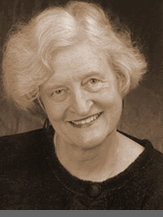

|
We’ll be serving Catalan turkey again this year, to about three hundred people who’ll sit down at tables covered with red tablecloths inside the church of Saint Lazarus. From all over Barcelona the Community of Sant’Egidio, who run the church, will bring their friends by car to the feast. We’ll be gypsies, blacks, Arab immigrants, and very old people; quite a lot of us will be in wheelchairs. The Romanesque church of Saint Lazarus was badly damaged during the Spanish Civil War, and then turned into an ironmongers’ shop. It was recently restored – a shell of its former self, but we think of it as still as beautiful as ever. It stands in the once-infamous and still very poor district of the Raval, where the transvestites used to hang out until they were shipped off in the cleansing of the city before the 1992 Olympics. Our job this Christmas will be to contribute two capons and two turkeys, find the ingredients, stuff them, and roast them, in what Catalans think of as an ancient tradition of theirs. The earliest mention I can find of a turkey in Catalan recipe books was in 1835 - though the bird was certainly well known before that. It was Spain, after all, that first domesticated the turkey and introduced it to Europe. But the modern Catalan “tradition” of stuffing turkeys and roasting them for Christmas has no doubt been influenced by British and American custom. Turkeys are eaten surprisingly little in Spain - it is Andalucia (where turkeys first arrived in Europe) and Catalunya that have found most room for them on ordinary dining tables. The Christmas
turkey recipe has been adapted, however, to Catalan tastes and ingredients.
The stuffing includes prunes, raisins, sausage meat, and pine nuts. The
birds - turkeys or capons - are basted in Catalan vi ranci, from the
region around Tarragona. This is an oxidized white wine, sweetened with must,
and aged, sometimes being left open in the sun. It has a deep and powerful
flavour, and is seventeen percent alcohol. You have to watch out for
flames while basting. Our market building is an enormous nineteenth-century pavillion
in cast iron and glass, with an octagonal dome in the middle. Its layout
is sufficiently genial and abundant to remind the visitor of Dante’s
Paradiso: the centre, under the dome, is for fish, and the rest - the
crowded stalls for the salt cod and olives, the meat, the offal, the The fruit and nuts lady to whom we were introduced was full of information and opinions on how to stuff and cook a Catalan Christmas bird. The common Catalan term for a turkey is indiot, from gall dindi, the hen of India. (Europeans all seem to have thought of turkeys as coming vaguely from the East; in no European language is America credited with its contribution of this bird.) Turkeys, here as elsewhere, took the slot of the medieval large ceremonial birds for feasts: peacocks, herons, cranes. Catalans still eat a lot of geese and ducks, the traditional accompaniment to which is fruit. Duck with figs, goose with pears, and quails with pomegranates are among Catalan national dishes. Our Christmas dinner at Sant’Egidio’s will begin with an hors d’oeuvres which will include many sausages (again “something stuffed” means something festive). This heavy hors d’oeuvres is a modern replacement for the ancient, copious Catalan dish of meats, the carn d’olla, which must have in it beef for St Luke, lamb for St John, pork for Saint Antony Abbot, and a cock for St Peter. We shall probably also have an entree of canelloni under a cream sauce, a dish which the Catalans have whole-heartedly embraced as their very own. Roast potatoes will accompany the capons and turkeys, brown with their basting in vi ranci. The dessert will be donated by one of the great restaurants of Barcelona: tiny leonesas (the Catalans took the recipe for these from Lyons in France), which are of eclair pastry with sugared cream injected painstakingly but deliciously into the bubbles within. Turrons from Xixona near Valencia, of ground almonds and honey, are to the Catalans what Christmas pudding is to the British. We shall accompany the meal with fizzy mineral water instead of wine, for the sake of the alcoholics in our company. After the meal comes the distribution of presents. Last year each gift was deliberately chosen for its recipient: there was a wallet for a man who had been knocked down and robbed; and a nine-year old gypsy child received her first doll, with a triumphant whooping cry as she shook it and its blue eyes blinked. Then we shall all help dismantle the trestle tables, and drag the chairs to the walls of the church. We’ll sit down to sing villancicos and nadalas (Spanish and Catalan Christmas carols). Then the gypsy singers and dancers from the fishing barrio of Barceloneta will entertain us, stamping on the church floor and fiercely wailing, as the rest of us clap and from time to time cry out, unable to restrain ourselves from expressing our ecstatic response. © Margaret Visser 2001 |
 |